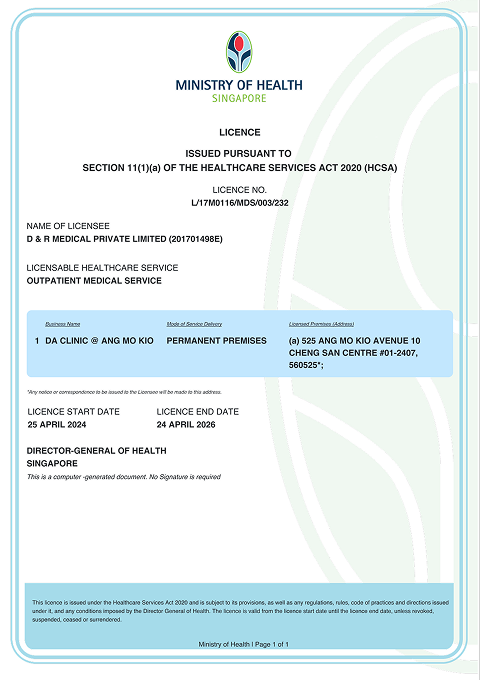You’re in the middle of rushing out a work report when a sharp, drilling pain starts behind your eyes, making it impossible to focus. Or perhaps you’re just stepping out of the house, ready to start your day, when your vision blurs with a sudden brightness, and a severe throbbing pain takes hold, forcing you to retreat to a dark room, completely debilitated. For anyone who has experienced this, or watched a loved one suffer through it, you know how utterly frustrating and disruptive frequent headaches and migraines can be.
The Difference Between Headaches and Migraines
Headaches are common pains in the head, neck, or face, often described as a dull ache or pressure. Migraines, on the other hand, are a more severe type of primary headache, often characterised by intense throbbing pain, usually on one side of the head, and often accompanied by symptoms like nausea, vomiting, and extreme sensitivity to light and sound.
Regardless of the type, if you’re looking for new ways to find comfort beyond quick pain relievers, here are five practical, science-backed tips that might help.
1. Consider Magnesium Supplements
Magnesium is a vital mineral that helps your nerves work well and muscles relax. Many people who get migraines have lower magnesium levels. Taking magnesium supplements can often help reduce how often and how bad headaches and migraines occur. It works by affecting brain chemicals and preventing blood vessels from constricting too much.
- How to try it: Include foods rich in magnesium like dark leafy greens, nuts, seeds, and whole grains in your diet. If you’re thinking about supplements, talk to your doctor first to find the right type and dose for you.
2. Use Targeted Acupressure Points
Beyond just rubbing your temples, pressing on specific acupressure points can offer relief by triggering your body’s natural pain responses. Try focusing on these two effective areas:
First, locate the points on either side of your spine, just below the base of your skull. Use your thumbs to gently press upwards into these hollows.
Second, find the fleshy area on the back of your hand, in the web between your thumb and index finger. Pinch this area firmly.
For both points, hold with steady pressure for 30-60 seconds, breathing deeply. You can do this anytime, anywhere.
3. Practice Deep Belly Breathing
Stress and muscle tension are common headache triggers. While it’s easy to say “relax,” truly calming your body starts with your breathing. Deep belly breathing (diaphragmatic breathing) helps activate a nerve that calms your nervous system. This reduces your body’s “fight or flight” response, which can lessen pain signals.
- How to try it: Sit or lie down comfortably. Put one hand on your chest and thCane other on your belly. Breathe in slowly through your nose, letting your belly rise while your chest stays mostly still. Breathe out slowly through slightly pursed lips, feeling your belly fall. Practise this for 5-10 minutes each day, and try it when you feel a headache starting.
4. Focus on Gut Health
There’s a growing link between your gut and your brain, known as the “gut-brain axis.” An unhealthy balance of gut bacteria can lead to inflammation and affect brain chemicals, which might play a role in how often and how severe your headaches are. It’s about more than just avoiding specific foods; it’s about nurturing your overall gut health.
- How to try it: Add fermented foods like kimchi, kefir, and plain yoghurt to your diet to support good gut bacteria. If you’re considering a probiotic supplement, it’s best to discuss it with a doctor, especially if you also have digestive issues.
5. Apply Specific Cold or Heat
While an ice pack on the forehead is common, applying cold or heat to certain areas can be more effective. For tension headaches, a warm compress or heat pack on the back of your neck or shoulders can relax tight muscles. For migraines, a small cold pack at the base of your skull (where your skull meets your neck) can help numb the area and reduce pain signals.
Another approach is to try a hot foot soak. The theory is that hot water dilates the blood vessels in your feet, drawing blood away from your head and potentially easing pressure there. It’s also a very relaxing experience, which helps reduce stress – a common headache trigger. While more scientific research is needed on foot soaks as a standalone treatment, many people find it a soothing and effective complementary remedy.
- How to try it: For head/neck, experiment with a warm pack or a small gel ice pack (wrapped in a cloth) on the affected area. For the foot soak, fill a basin with water as hot as you can comfortably manage (not scalding), and soak your feet for 15-20 minutes. Sometimes, switching between hot and cold on different areas can also help.
Don’t Suffer in Silence: Talk to a Doctor
While these tips can offer comfort and relief, it’s important to understand the cause of your headaches. Frequent or severe headaches and migraines can sometimes signal underlying issues like chronic stress, sleep disorders, medication overuse, or, in rare cases, more serious neurological conditions that require medical attention.
If you have frequent or severe headaches, especially with other symptoms like vision changes, weakness, or numbness, always get it checked by a doctor, who can help figure out if there’s an underlying condition, pinpoint your specific triggers, and create a complete plan for managing your headaches, which might include medication or further tests.
Taking action to understand and manage your headaches can significantly improve your daily life. Don’t let head pain take over.
Need personalised advice for managing your headaches or migraines?







